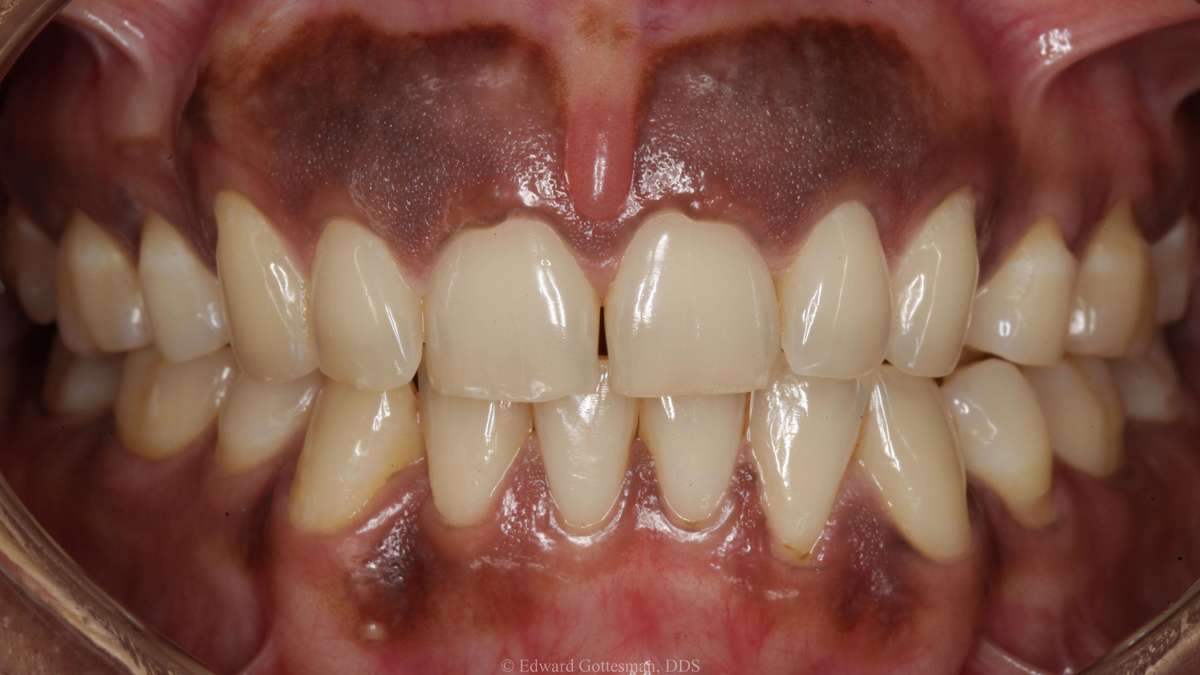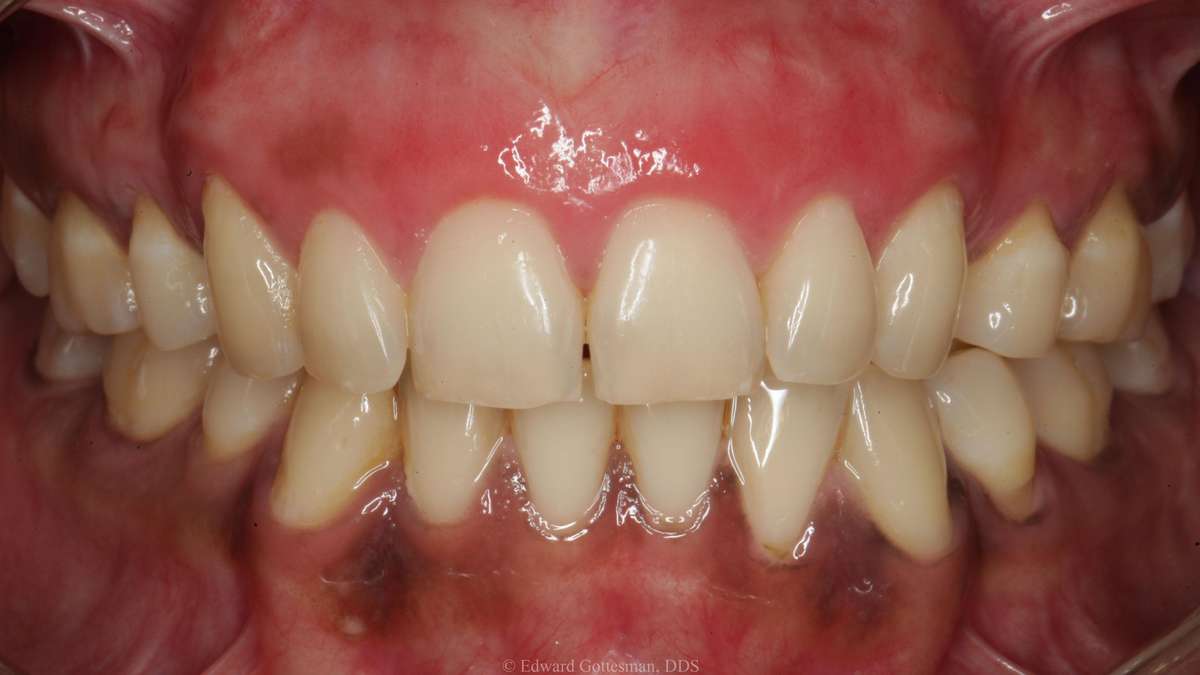Sometimes, the difference between an average smile and an extraordinary smile is dependent upon more than just your teeth. The color, health, position of your gums, the underlying bone, and even your lips can influence the attractiveness of your smile.
With periodontal plastic surgery, including gum grafting, crown lengthening, and gum bleaching, we can make subtle or dramatic changes to the hard and soft tissues that support your teeth. Using state-of-the-art techniques and qualified by decades of experience, Dr. Gottesman, Dr. Pitman, and Dr. Bogart can customize each procedure to meet your unique needs.
Gummy Smile
A great smile begins with proper proportions. When there appears to be more gum tissue than tooth structure, your smile can seem “gummy” and unbalanced. What you may not realize is that there may be several millimeters of tooth structure hidden beneath your gums. Crown lengthening exposes more of the natural tooth by reshaping or recontouring bone and gum tissue.
With aesthetic periodontal therapy, including crown lengthening, we can make subtle or dramatic changes to the hard and soft tissues that support your teeth. Using state-of-the-art techniques and qualified by decades of experience, our team can customize each procedure to meet your unique needs.
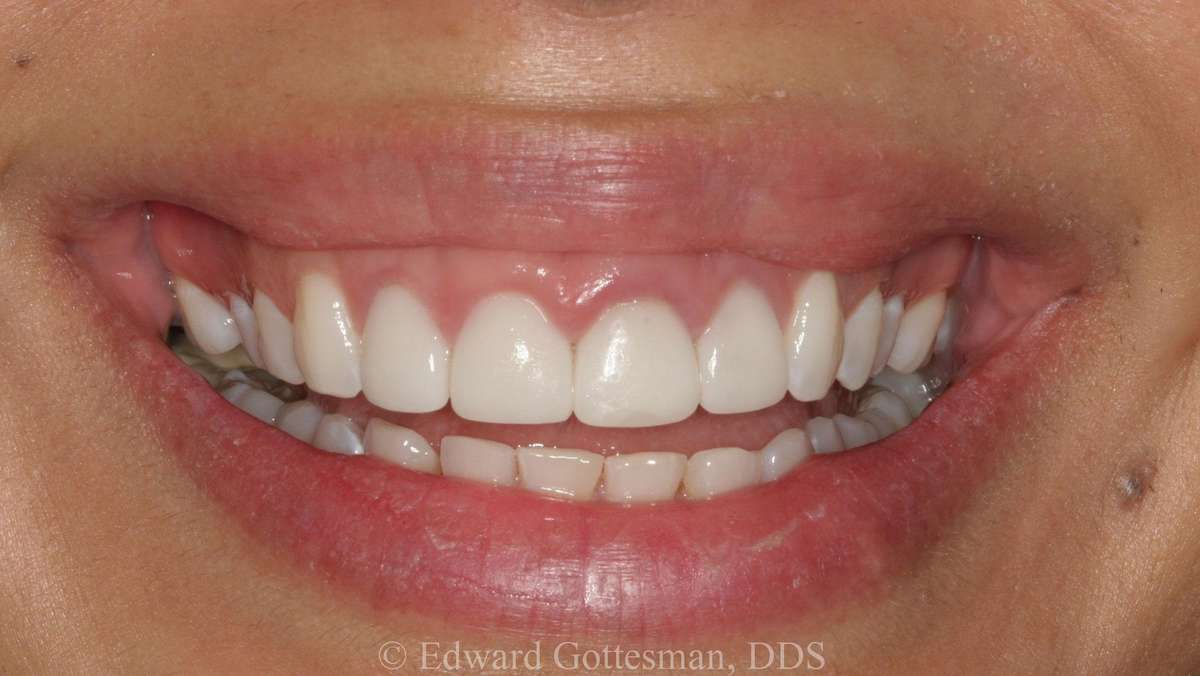
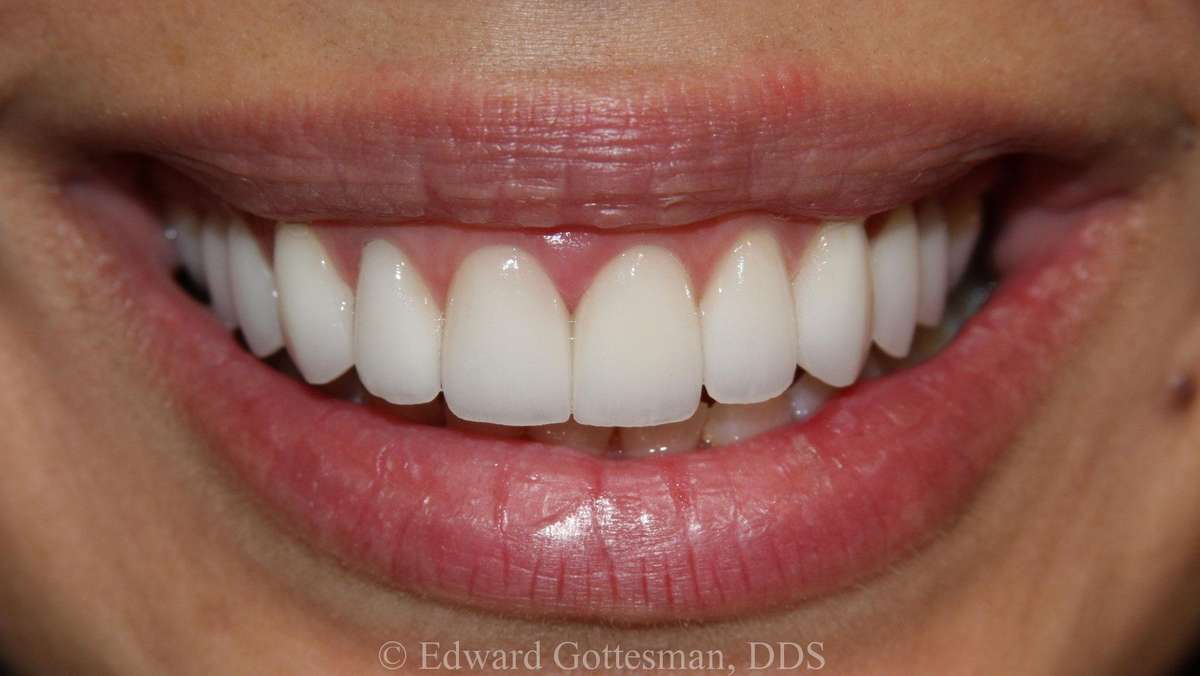
Collaborating with a prosthodontist, Dr. Gottesman performs crown lengthening to support successful smile makeover. (DocReels production)
What Is Crown Lengthening?
Both the gum tissue and the underlying bone can be gently reshaped around each tooth in order to expose more of your natural tooth structure. The crown lengthening procedure can lift the gumline and make it appear more even, and makes the teeth appear longer.
Crown lengthening is performed to improve the health of the gum tissue and/or to prepare the mouth, teeth and gums for a cosmetic or restorative procedure. Crown lengthening procedures can correct those “gummy” smiles where teeth are partially covered with excess gum tissue. This treatment can be performed on a single tooth, or the entire gum line, creating a bright, aesthetically-appealing smile.
Gum Recession
When there is a lack of gum tissue around one or more teeth, the result is an unhealthy and unattractive periodontal condition known as recession. Besides complaining of root sensitivity around the affected teeth, you have an increased risk of developing root cavities due to the exposure of the porous and less mineralized root surface. Additionally there is an increased likelihood that the gum-line will continue to recede in an area of prior recession. Since the gum tissue is unable to repair itself, the tissue may need to be replaced with a minimally invasive grafting procedure.
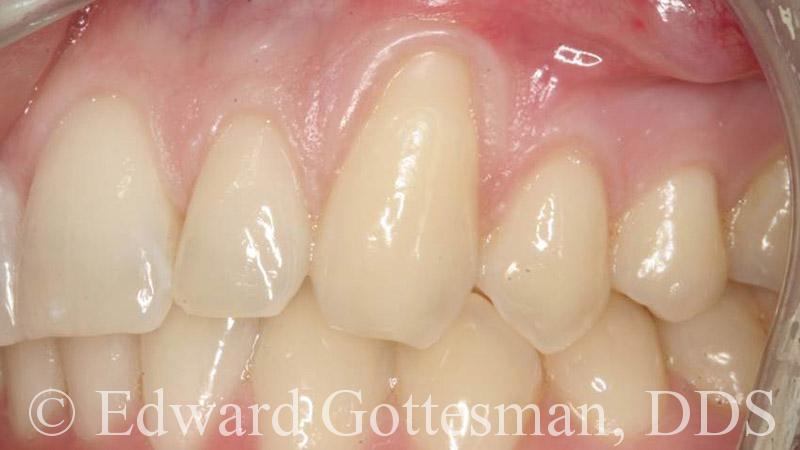
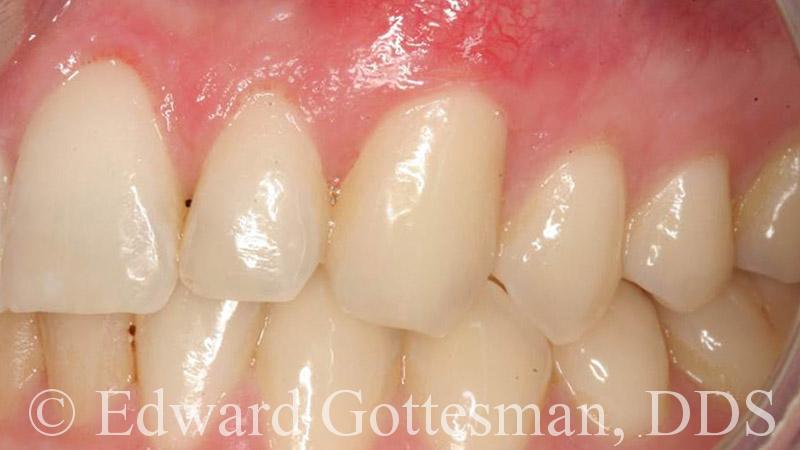
What Is Gum Grafting?
Your own tissue, that of a human donor
(i.e. Alloderm®), or animal tissue (i.e. Mucograft®) can be surgically transplanted in localized areas to correct the gum recession, yielding a natural and beautifully sculpted smile.
With no need for a donor site, your missing gum tissue can be regenerated with healthy, beautiful natural appearing gum tissue. Including the surgical procedure, the recovery period, and the final appearance, most patients prefer Gintuit™ for the treatment of missing protective (keratinized) gum tissue.
Enhancing Root Coverage Procedures with Emdogain™
Dr. Gottesman uses Straumann® Emdogain™ to enhance the results of existing root coverage procedures including self-tissue grafts (autografts), donated human tissue grafts (allografts) such as Alloderm® Regenerative Tissue Matrix from
Lifecell™ and animal tissue grafts (xenografts) such as Geistlich Mucograft®.
Collaborating with a restorative dentist, Dr. Gottesman performs gum grafting and crown lengthening to support a successful smile makeover. (DocReels production)
Dark (Hyper-pigmented) Gums
We generally associate healthy gums with a natural pinkish hue, but some patients have darker gums due to increased production of melanin—the same substance responsible for your skin color, moles and freckles—in the soft tissues of the mouth.
Such gum discoloration can result from genetics or other causes like smoking or medications. Unusually dark gums or noticeably dark splotches in the gums may make patients feel self-conscious about smiling, even when the teeth are perfectly aligned and brilliantly white. If you are dissatisfied with the shade of your gums, you may benefit from gum bleaching to address it.
What Is Gum Bleaching (Gingival Depigmentation)?
Gum bleaching takes place in the office in just an hour, with immediately noticeable results. Our dentist can use gum bleaching for large areas of the gum tissue or for spot bleaching. The procedure is performed using lasers that target melanocytes, the cells that produce melanin.
Because gum bleaching relies on lasers, the procedure is quite comfortable for patients, requiring just a local anesthetic. Patients also heal more quickly than if surgical instruments were used. Although gum bleaching itself is not invasive, you may notice that your gums are a bit more sensitive immediately after the procedure. As such, you may need to make minor adjustments to your diet for the next day or two until you are feeling back to normal.
The appearance of your gums is just as important to a beautiful smile as straight, white teeth. Gum bleaching may enhance your smile on its own, or it can be performed in combination with other treatments such as gum grafting or recontouring.
If your gums are discolored, distracting from your smile’s aesthetics, contact our office to schedule a gum bleaching for an upgrade to your look!
